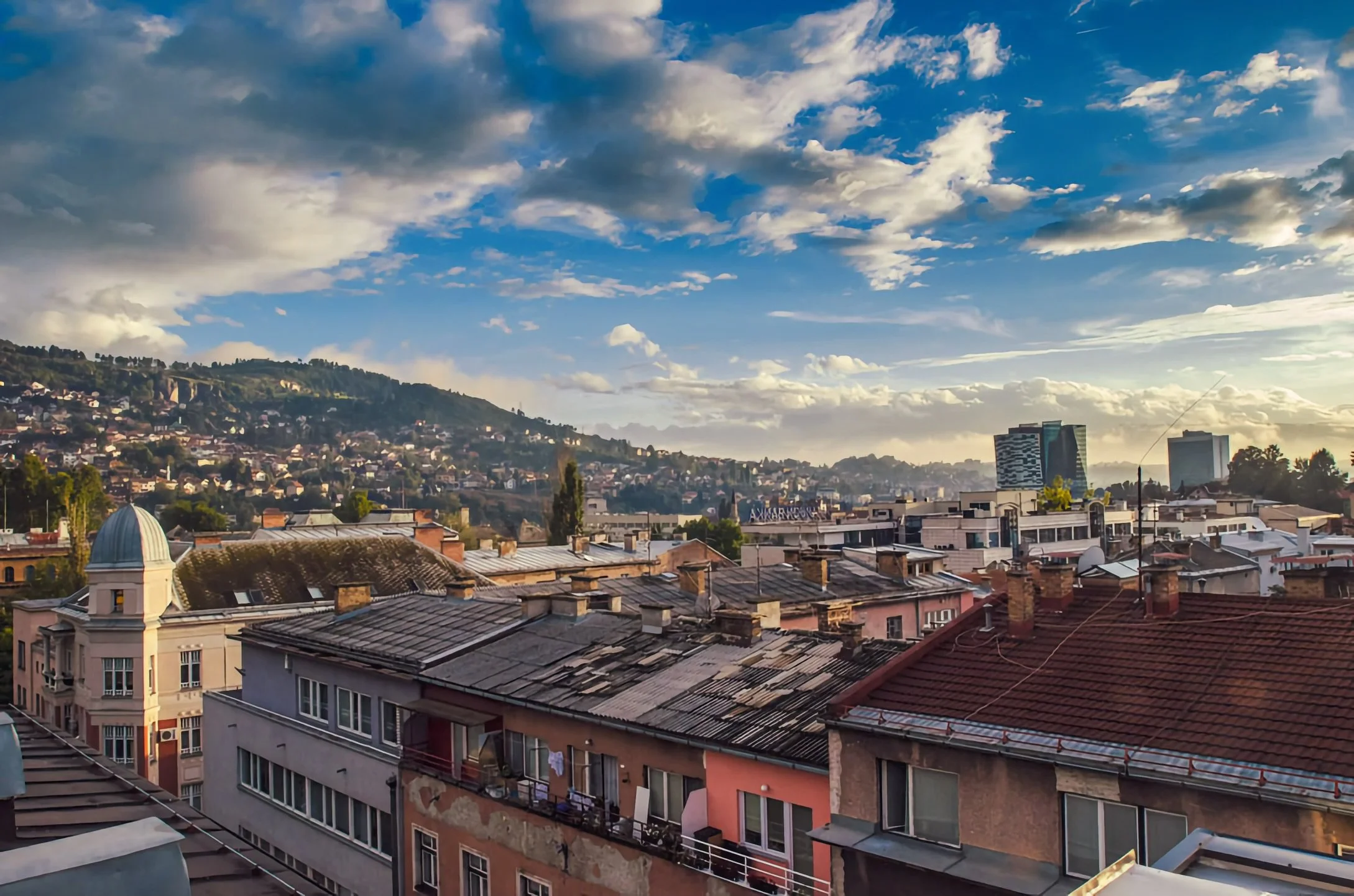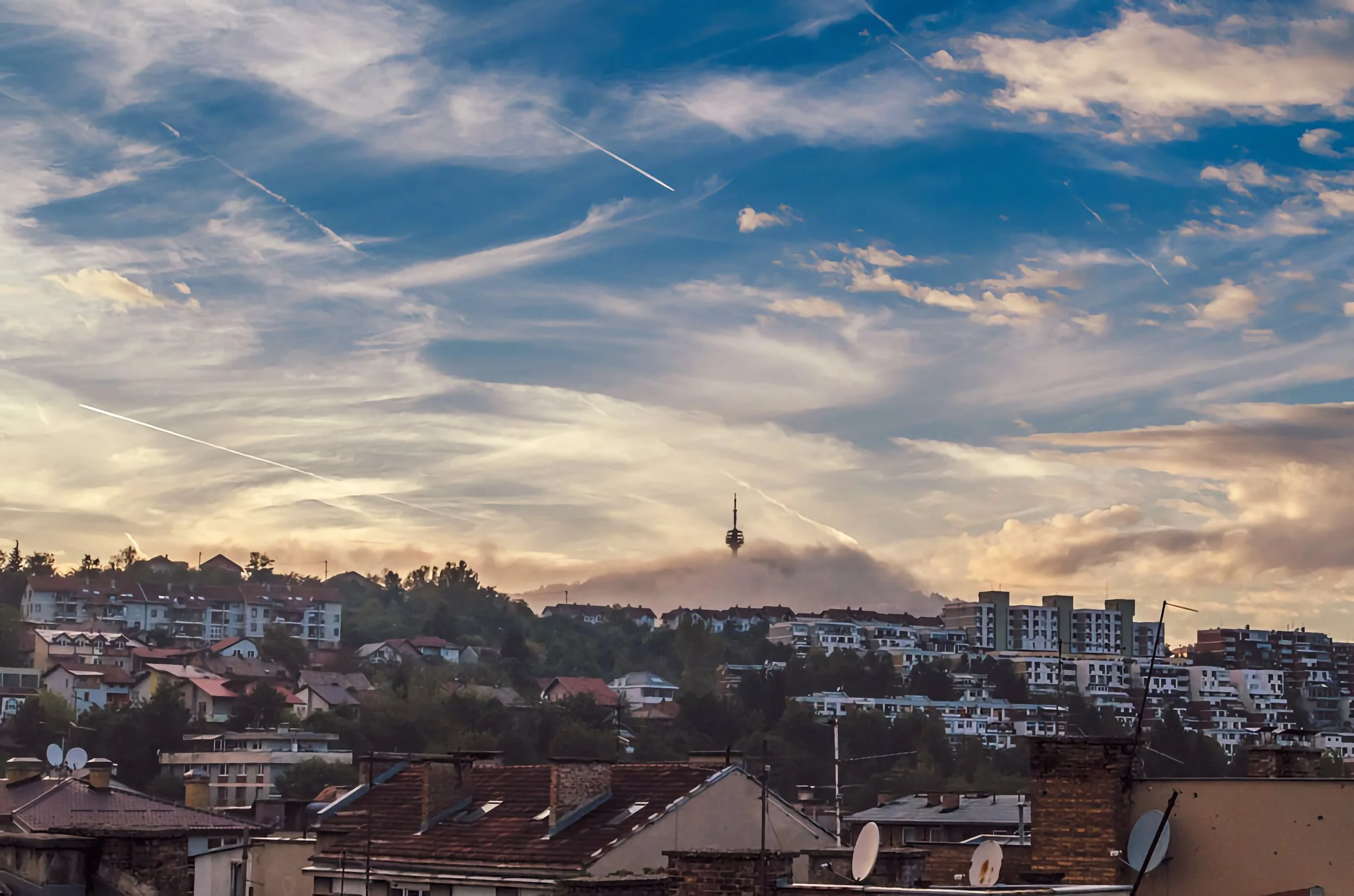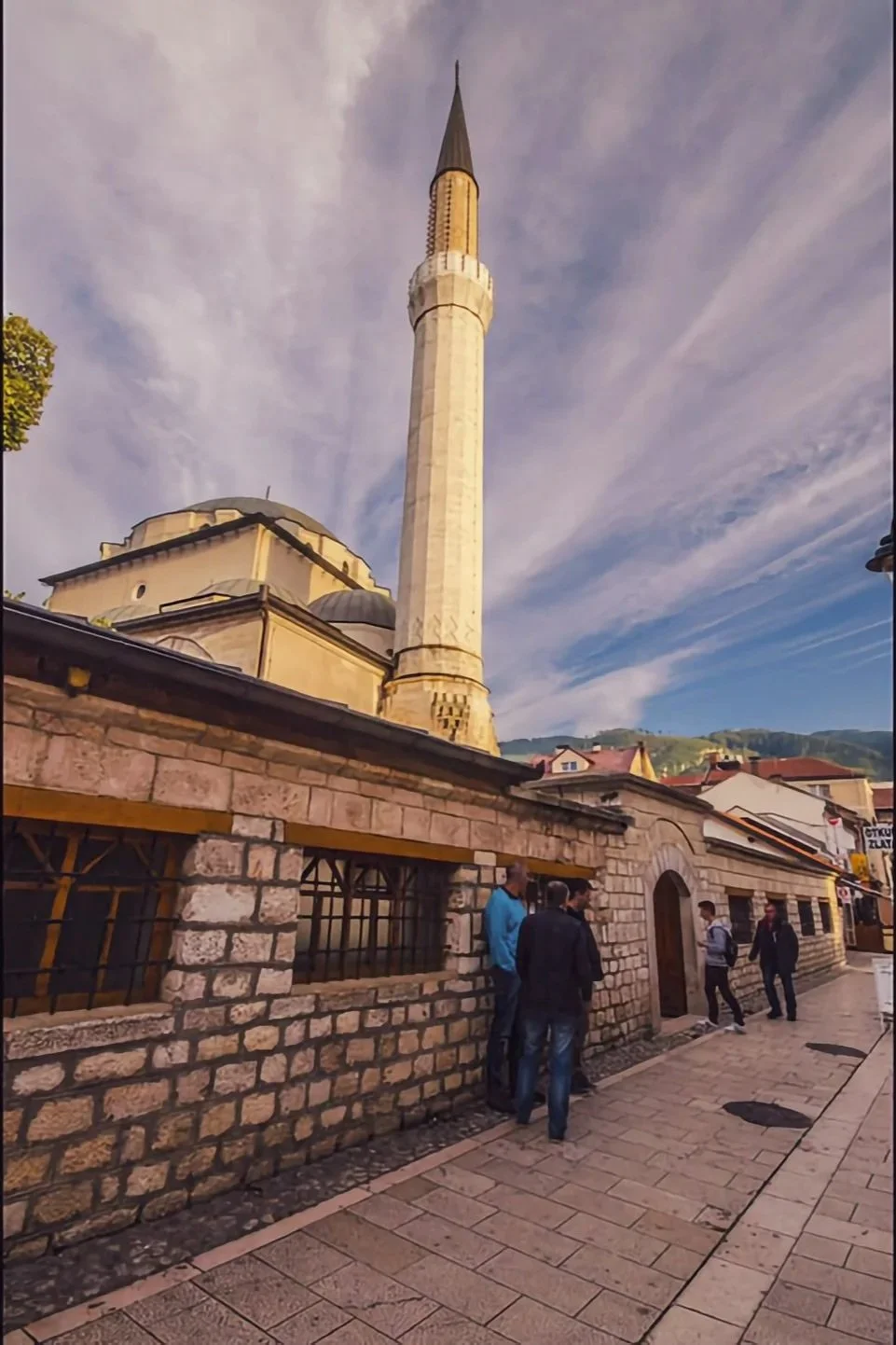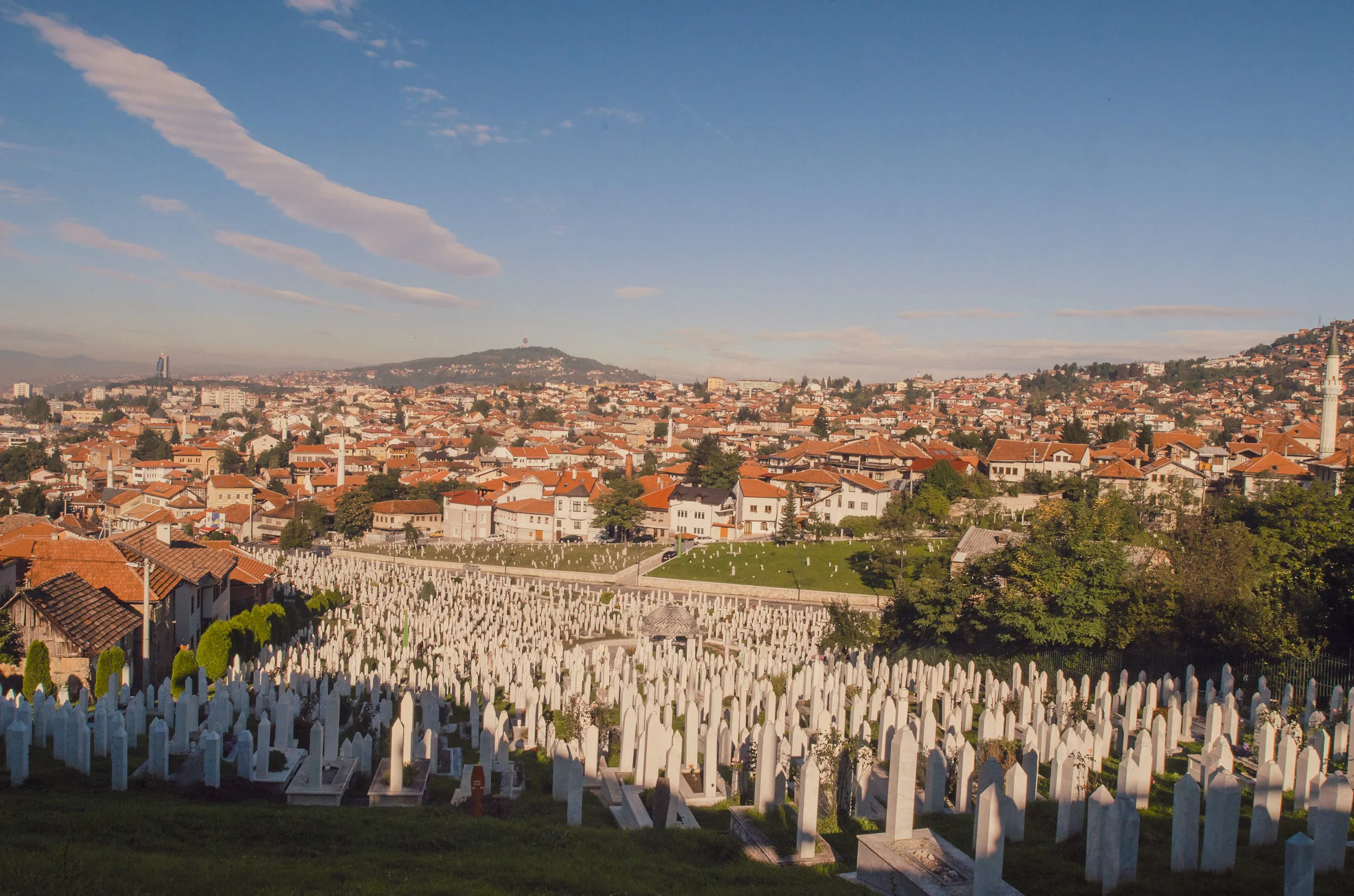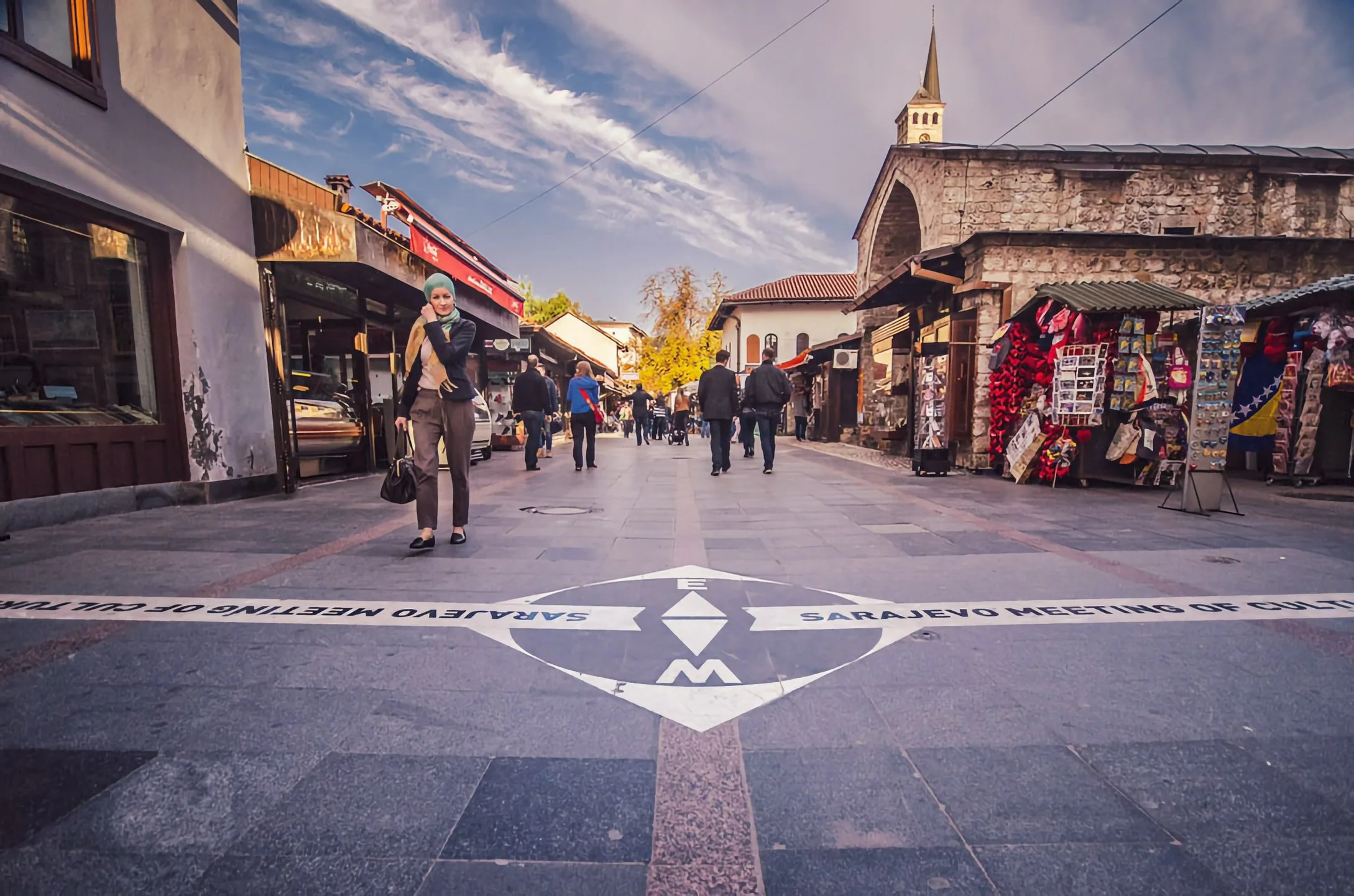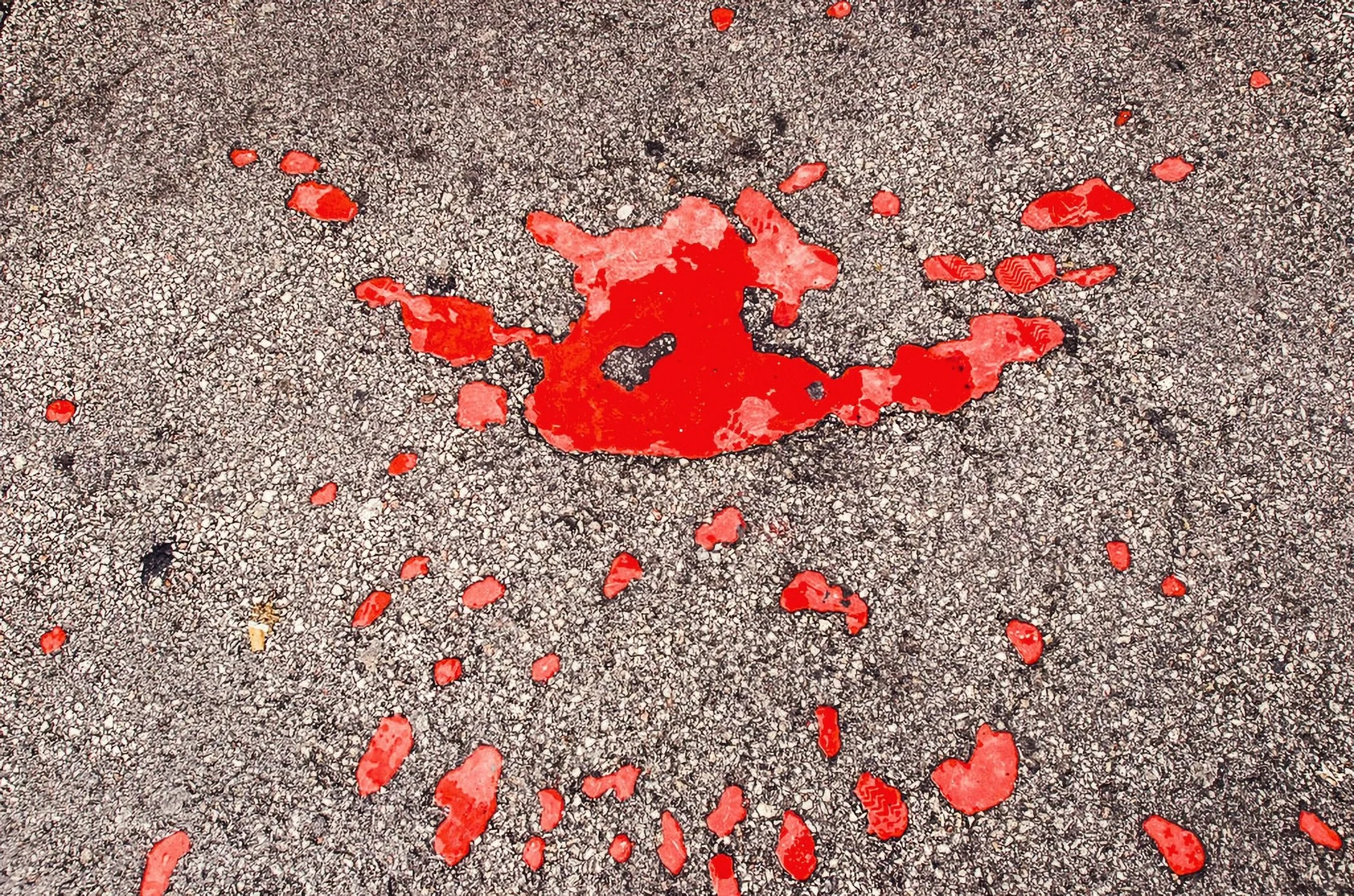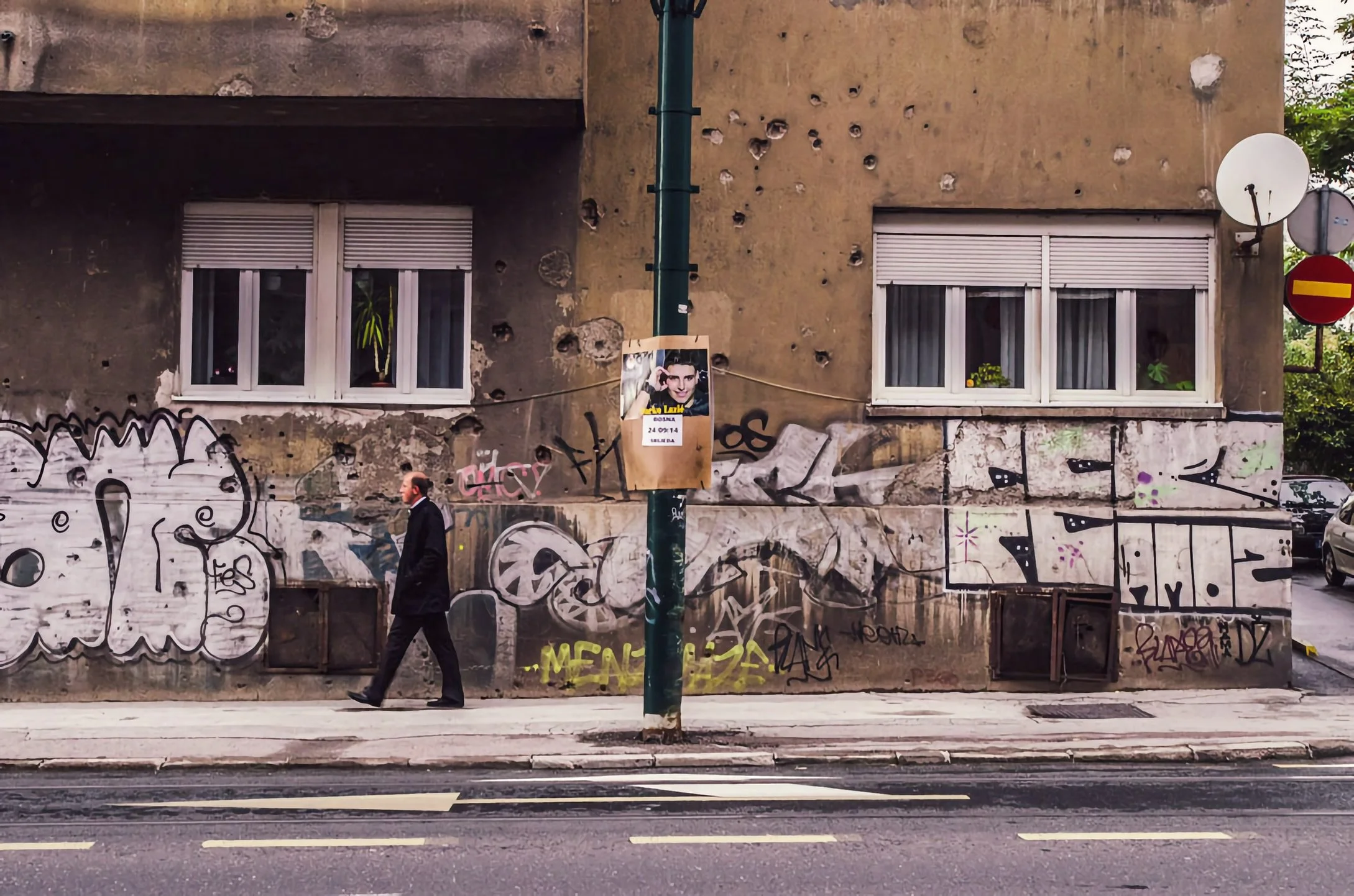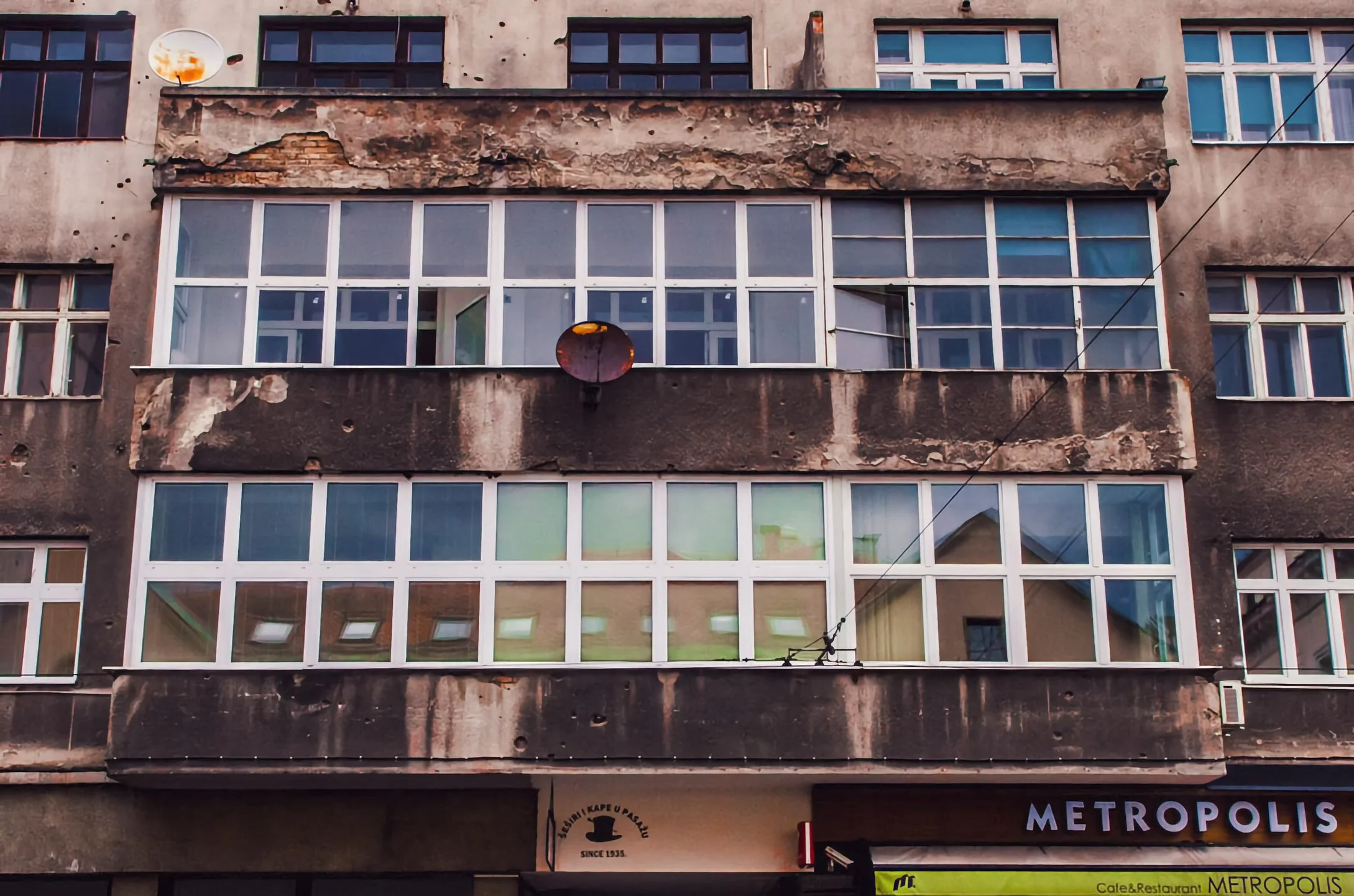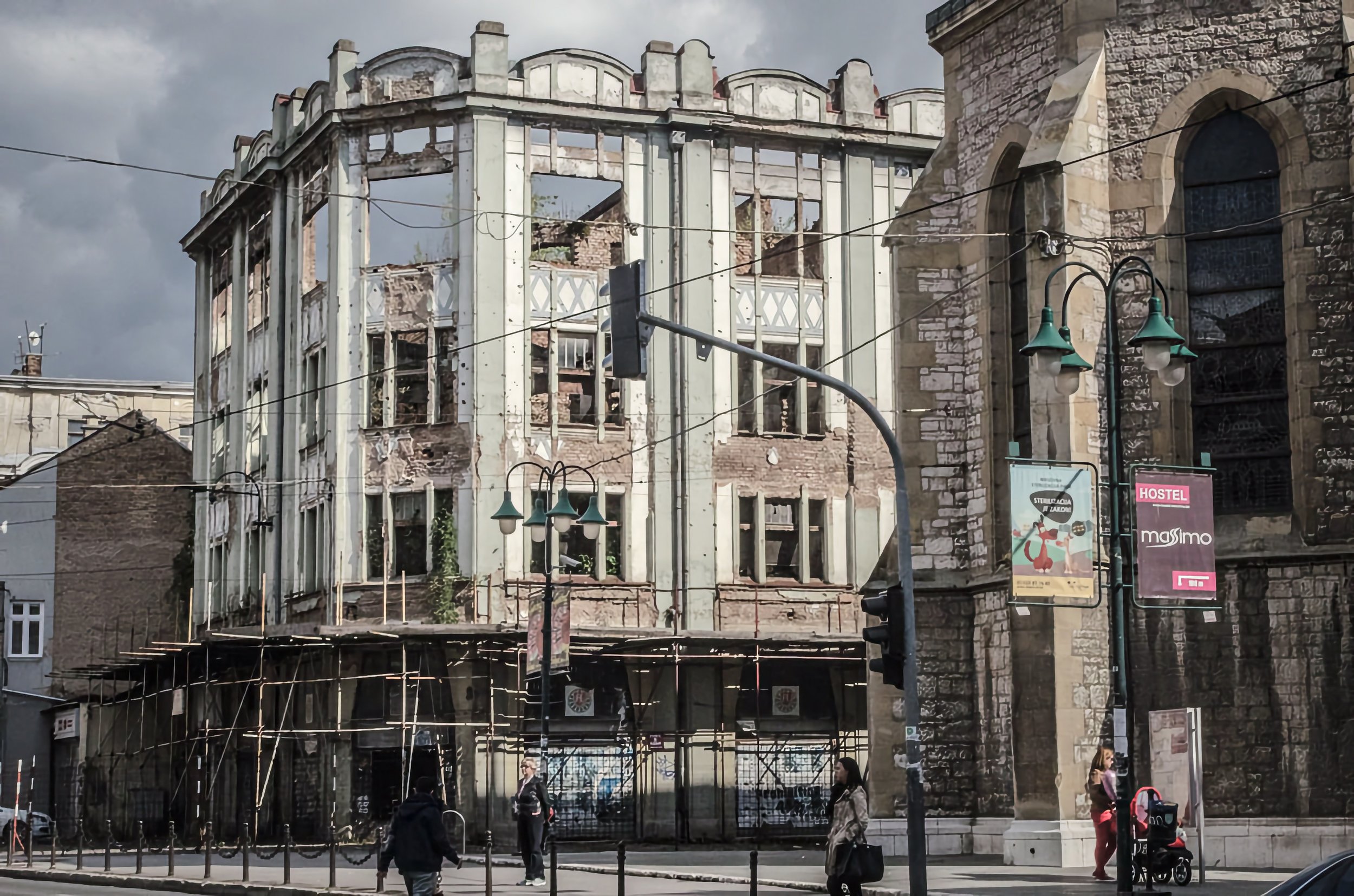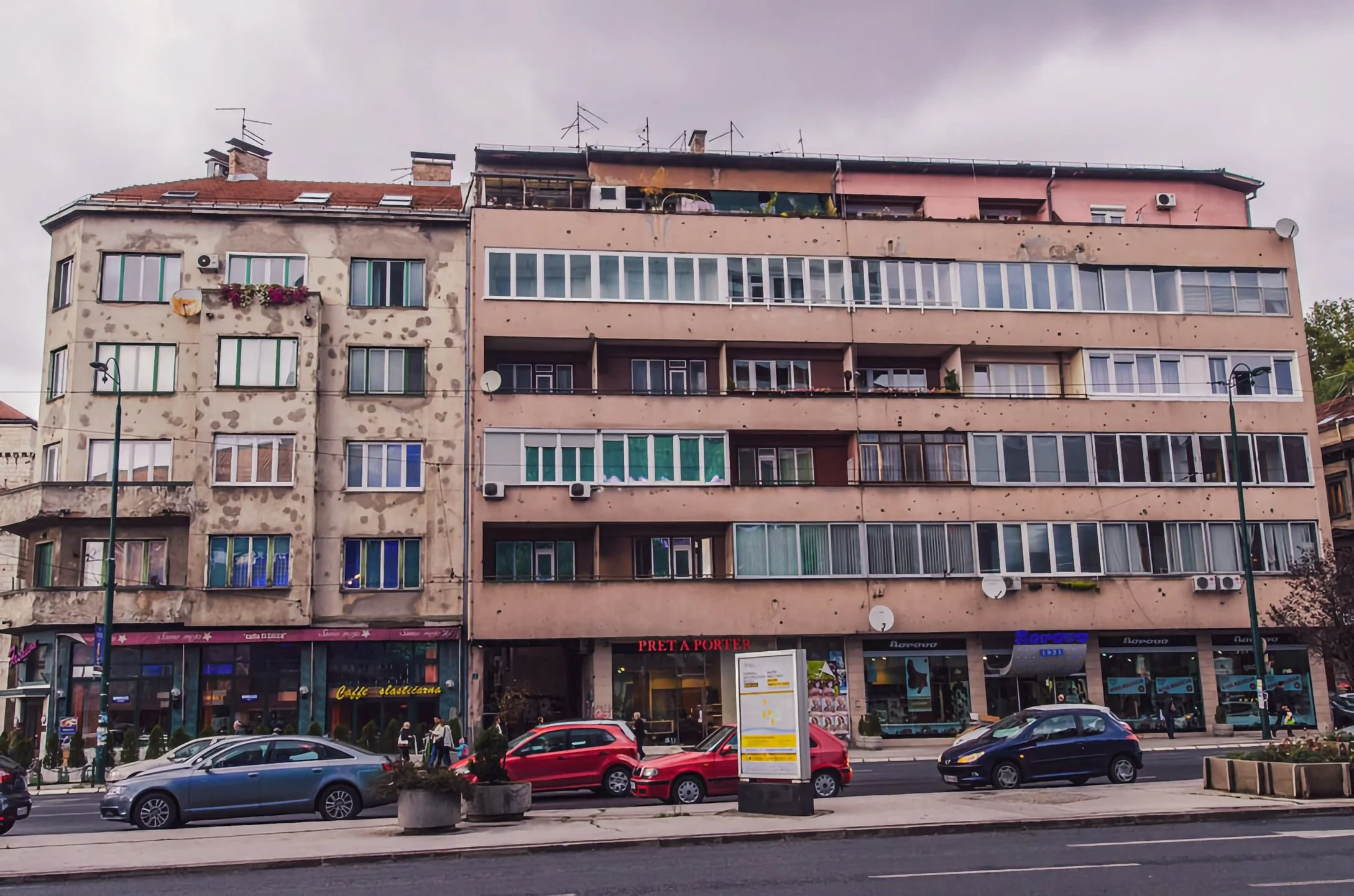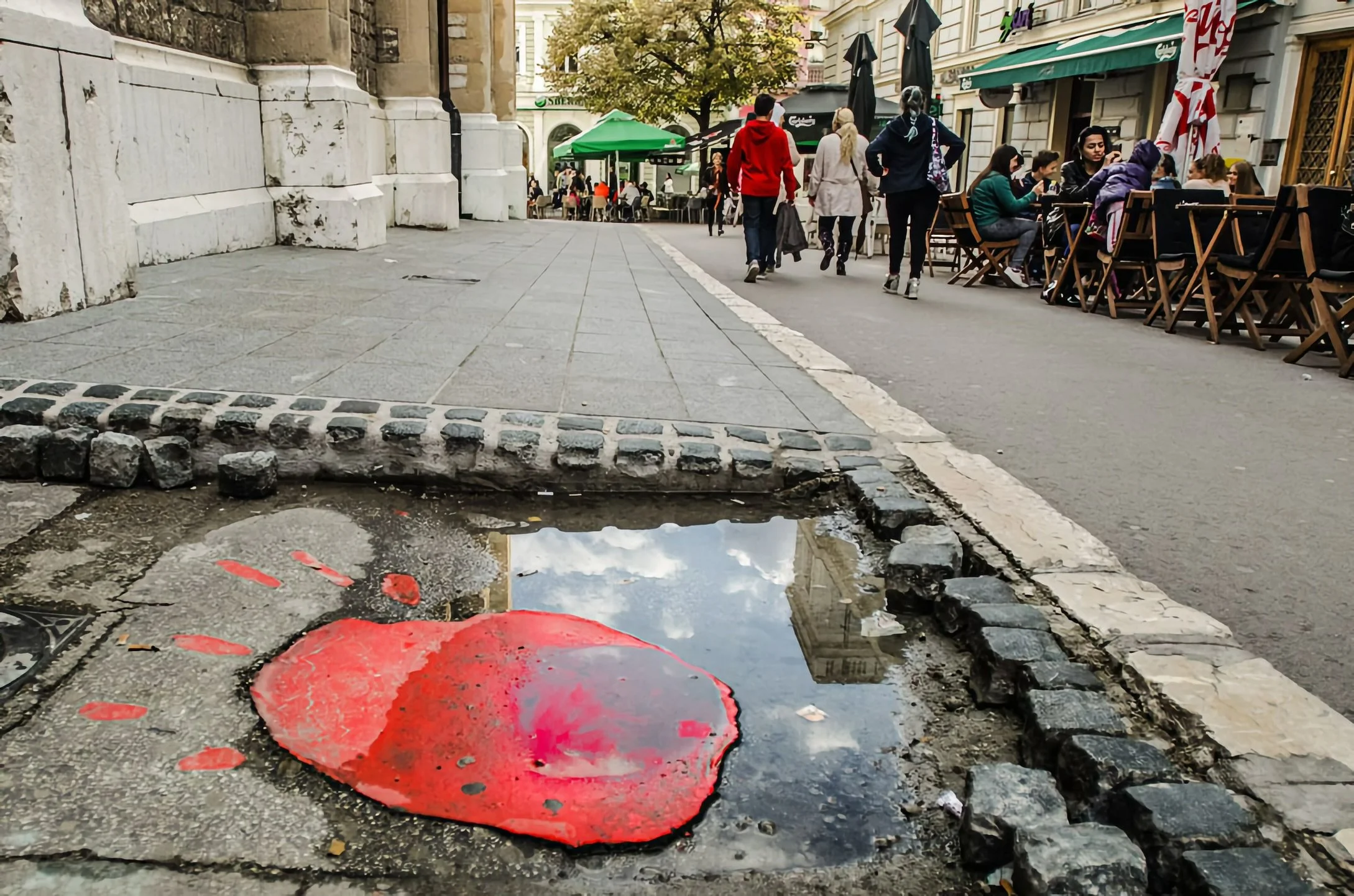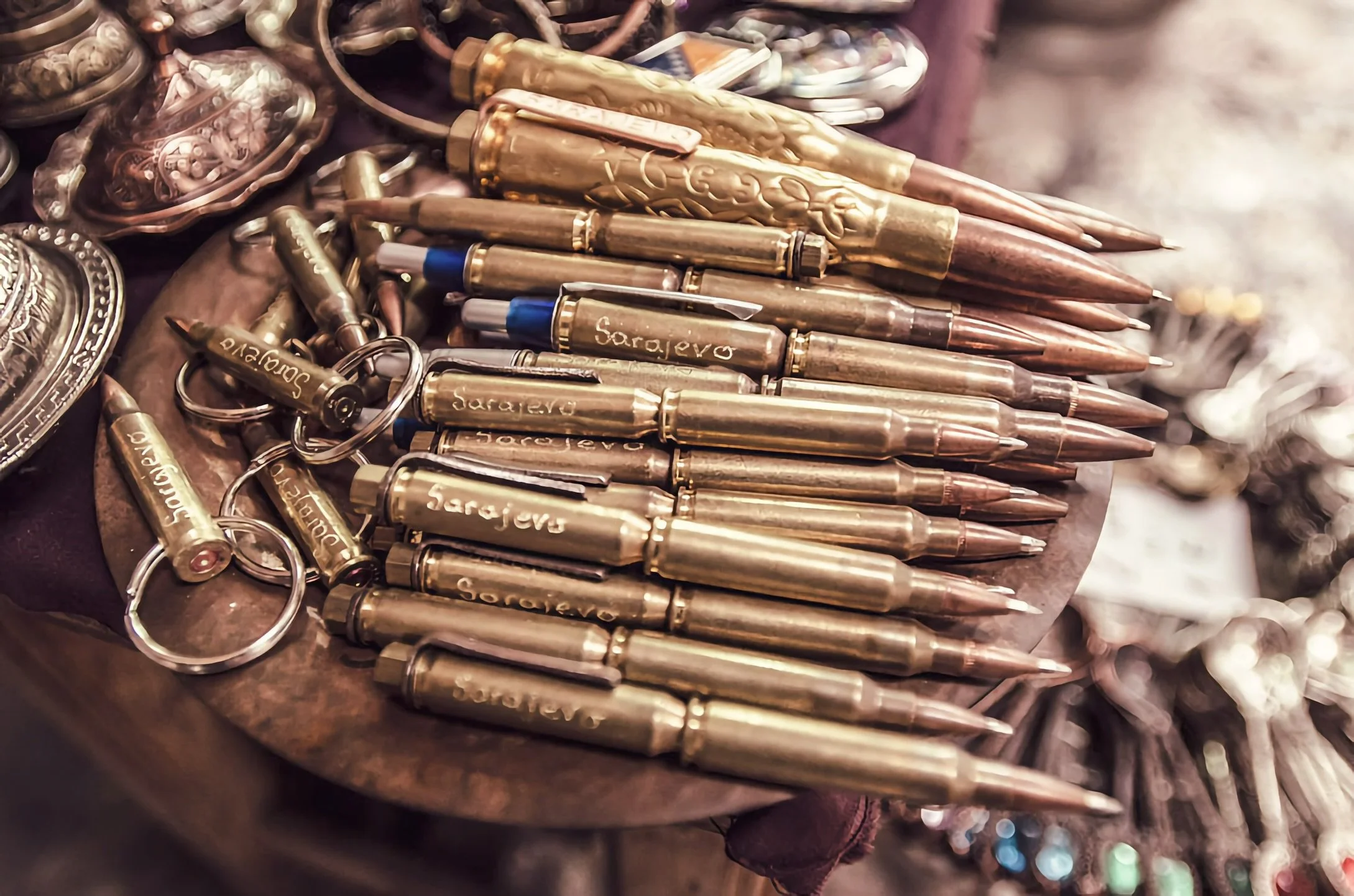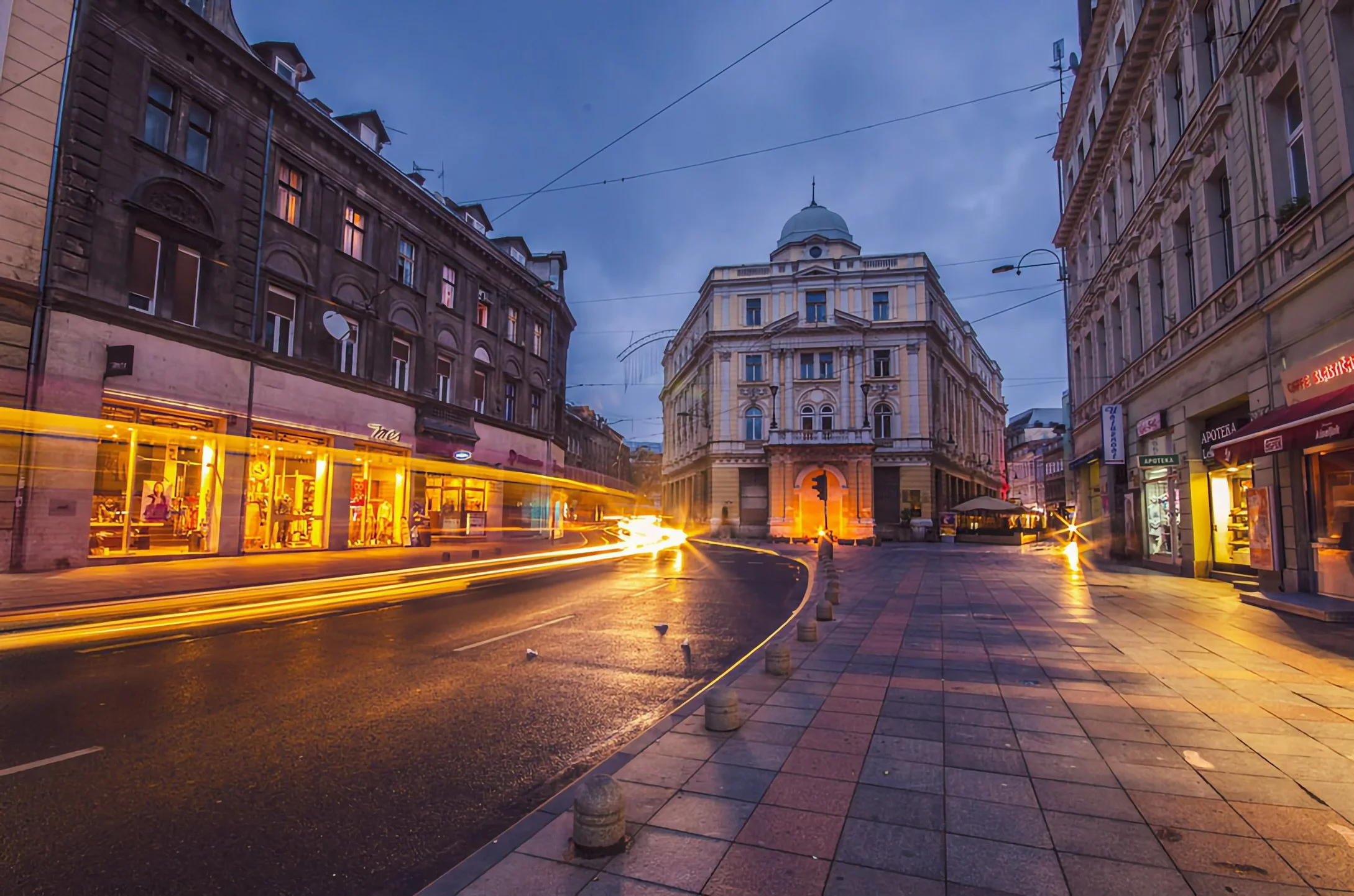
A Shot in Sarajevo
I remember hearing about the siege of Sarajevo on the news, when I was no more than nine years old. I could not quite grasp what it meant, besides the obvious — there was a war. The word Sarajevo entered my mind attached to something dark. Since then, every time I’ve heard talk on Sarajevo the first thing that came to mind was the siege – the link in my head is unbreakable.
Twenty years later, I landed in the city once caught between empires, the “Jerusalem of Europe”. On my first walk in the old town of Sarajevo I marvelled at the diversity around me, the density of difference: mosques, churches, synagogues, and Austro-Hungarian facades sharing the same streets.
The diversity of Sarajevo is not the result of the formation of a 20th century metropolis, but of centuries of layered histories. There is a spot in the old town, where you look east and see Istanbul, then you look west and see Vienna. The city calls it “the meeting of cultures”. This historical mosaic narrates the story of the Balkans and makes one ponder over the problems of separatism and the possibilities of unity in this rather small, but largely troubled part of Europe.
Most of Sarajevo has been rebuilt, yet the scars remain. Buildings hold their wounds so that passers-by do not forget how fragile existence can be. On the streets and pavements, Sarajevans have preserved the concrete craters left by mortar shells by filling them with red resin. Oddly enough, it took me a few days to notice them — on the pedestrian zone, in front of the cathedral, right in the middle of the streets. During the siege there were, on average, more than three hundred shell impacts per day. Now they are called Sarajevo Roses.
Downtown, the tourist shops overflow with jewellery, coffee pots and mugs for Bosnian coffee, ornamental plates, gravures, rakija bottles and, of course, souvenirs with Vučko, the 1984 Winter Olympics mascot. In these shops, one will also find bullets. Bullets turned into pens, key chains, miniature airplanes or cars, bullets with drawings of minarets and the Pigeon Square. One shopkeeper told me he had fought during the war — he had to be there, he said. When I asked how it felt to sell bullets as souvenirs after everything he had seen, he shrugged gently. “At least we don’t use them to kill people anymore. We make something beautiful out of them.”
At the corner of Marshall Tito Str. and the pedestrian zone, stands the Eternal Flame, a memorial to those who fought with the Yugoslav National Army during the Second World War — their descendants would one day turn their weapons on one another. The monument, too, is marked by bullet holes. Roma children often gather around it for warmth. One morning, I found two of them sleeping against each other by the flame – a heartbreaking sight.
On my last day I visited the Srebrenica Memorial gallery in honour of the 8,372 people murdered in the massacre of Srebrenica in 1995. Inside Tarik Samarah’s photographs alongside two documentaries and the wall of death — a 16-meter long wall with the names of the victims —confront visitors with unbearable testimonies. I remember mothers’ voices: “my son had green eyes”, “my son had a round face like mine”, “why would they do this to my son?”. It is hard not to look away from these images. By the I needed air. In the lift I asked the receptionist if many people left in tears.
“Yes” she said softly, “but we are used to it.” Her calmness was somehow equally distressing.
It was a beautiful, sunny day. I walked with friends to clear my mind. Many young Sarajevans told me they were tired of the city being known only for the siege, there’s much more to it than the war – and they are right. But Sarajevo is a city overlooked by cemeteries for the victims of the siege on the surrounding hills. The most prominent, the Kovači memorial cemetery, holds the grave of Alija Izetbegovic, the first President of Bosnia and Herzegovina. And right at the heart of Sarajevo, in front of a beautiful park, stands a monument to the children killed during the siege — an unfinished sand pyramid, a game interrupted.
I passed that park every day. One afternoon I saw a little boy playing with his toy car on the monument. The sight felt symbolic: a people caught between preserving memory and longing for closure.
A shot can be many different things, but in Sarajevo, a shot seems to have one meaning above all others: that specific moment in time when Archduke Franz Ferdinand gasped and said his final words, “Es ist nichts” — “It’s nothing”. This is, seemingly, the starting point of the struggle: a little bridge over a river.
It has been 101 years since the shot was fired and twenty years since the end of the siege. Wandering through the city, I realised that twenty years are not nearly enough for something to become history. Whether a hundred years is an adequate amount of time, I cannot say either.
